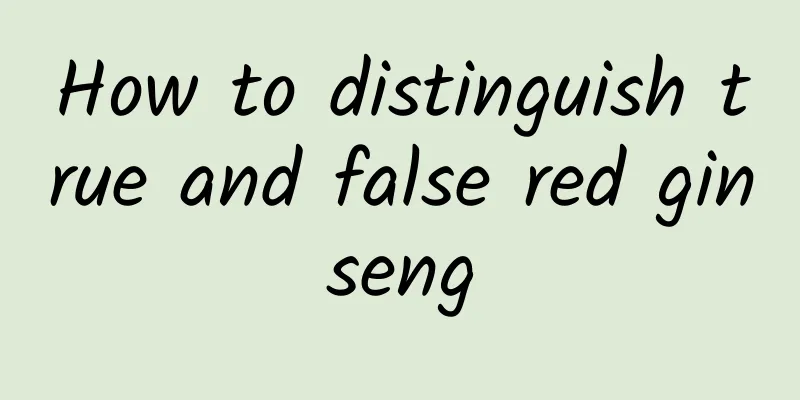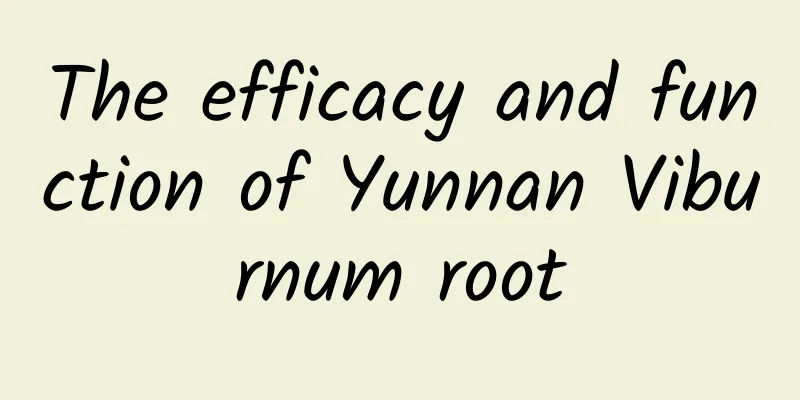How to distinguish true and false red ginseng

|
Red ginseng is a skin care product, and many people like to buy this thing to protect the body. However, the red ginseng currently on the market is not necessarily genuine, and there are many fakes flooding the market. Therefore, when buying red ginseng, everyone needs to be discerning. Below I will introduce some methods to distinguish the authenticity of red ginseng. 1. General identification of red ginseng: The sensory characteristics of red ginseng are generally ginseng stalks, detailed body, total length 6 to 17 cm, body (main stem) length 5 to 10 cm, diameter 0.5 to 2 cm, light brown, brown or dark brown surface, transparent to light; some are not completely transparent, showing dark yellow soft spots. The upper "shoulder" is blunt and rounded, connected to the rhizome (underground stem). The reed head is relatively short, with a discernible stem mark on the top and 2 to 3 lateral roots below. Annular marks can be seen at the upper end of the body, and the epidermis has wrinkles, longitudinal grooves and fine root marks. The ginseng whiskers have been removed. It is hard and brittle, with a smooth, bright fracture surface, cuticle-like, brown-red; the neutral color is slightly lighter, and the jugular color is darker. 2. Identification of decorative red ginseng: Its shape, color, transparent cuticle pattern, etc. are similar to those of ordinary red ginseng, but its unique characteristics are its long stem, long body, and long legs ("three lengths"). Because the raw material ginseng has a long planting period (7 to 9 years), the upper part of the body is darker and less smooth, the shoulder has obvious longitudinal lines, and the overall characteristic is "more skin and flesh" (refer to the first section of this chapter), with 2 to 3 branch roots. 3. Identification of special red ginseng: short stem, solid texture, dark color, and the ability to suppress imprints. Its area is more than 40% smaller than that of ordinary red ginseng, and its relative density is increased by 1 times (from 0.8g·cm-3 to 1.6g·cm-2). A single root is an irregular long prism with obvious embossing, 9 to 16 cm long, with a shorter reed (after the reed shrinking process, part of it is "shrunk" into the shoulder), and 2 to 3 trimmed lateral roots. The surface is brown-red and shiny, the shoulders are lighter in color and have ring patterns; the epidermis has fine longitudinal wrinkles, without grooves, yellow skin or scars. It is hard and brittle, with a flat, bright, delicate, non-porosity, and stratum corneum-like cross section. |
<<: The difference between honeysuckle and mountain honeysuckle
>>: Cordyceps sinensis price_How much is the price of Cordyceps sinensis
Recommend
Cao Yuan made another major breakthrough and published two results in succession, and the four-layer "magic angle" twisted graphene was born!
[Mobile software: BoKeYuan] Graphene is composed ...
Why do I have to drive through a red light when I see one? It turns out it’s not just bad luck!
When driving or riding a bicycle, have you ever e...
Can Cistanche be eaten directly?
In recent years, with the popularity of tradition...
The efficacy and function of large-leafed ear root
Many people know that the large-leafed ground ear...
Can I surf the Internet on the moon? Can I grow vegetables? Latest answers!
The National Space Administration announced on Se...
What are the medicinal values of cuttlefish bones?
Most people may not know about cuttlefish bones. ...
A post-90s doctor discovered a new species! Named after this city
Recently, Huang Chao, a doctoral student born in ...
Can Panax notoginseng be used to make wine?
Panax notoginseng is also known as Tianqi. It is ...
The efficacy and function of boxwood
The efficacy and function of the Chinese medicina...
Drink more hot water when it's cold? Be careful! Exceeding this temperature may cause cancer
When the weather gets cold, you can’t live withou...
The efficacy and function of angelica
As a traditional Chinese medicine, do you know th...
Insights: The harder it is, the more you should applaud yourself
Famous Artists Gallery | Lu Yifei, a native of Ch...
Artificial beef jerky, do you dare to try it?
Produced by: Science Popularization China Author:...
The efficacy and function of kiwi root
In daily life, people are not only very familiar ...
Compound camphor cream
<br> Compound camphor cream is a medicine wi...









